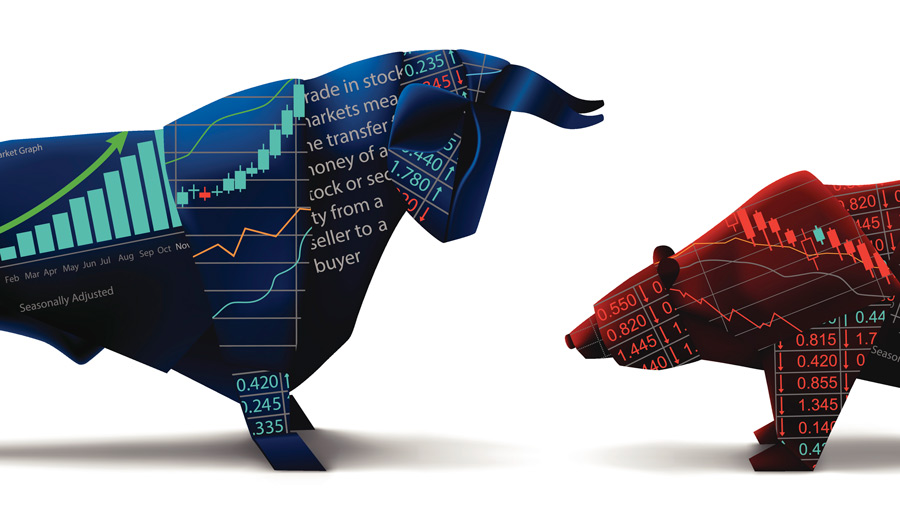Personal Wealth Management /
When “Nothing” Is the Right Thing
When volatility kicks up, our evolutionary response and the correct thing to do are often exactly opposite.
Financial media today is fraught with the following advice: “Stocks have come too far, too fast,” “Sell now and lock-in your gains.” What should an investor do when barraged with fear-based headlines and advice to bailout of the stock market? This is hard for many to accept, but the right thing to do is often nothing at all. Fact is: Stocks rise much more than they fall.
If that’s true (it is), then why are folks often so fearful? Myopic loss aversion is one reason. Myopic loss aversion is a normal evolutionary response that makes humans feel pain incurred from loss much more than the joy derived from equal-sized gains. So much so that, for many investors, the memory of 2008’s bear market—now five years distant—weighs far heavier in their minds than the current bull market. Even though the current bull market is now greater in magnitude than the preceding bear!
Yes, the 2008 bear market was big—but it was also unusual. 2008 was one of only three calendar years the S&P 500 fell by more than 30% since 1926. (See Exhibit 1.)
Exhibit 1: Market Returns Are Positive More Often Than Not
Source: Data through 12/31/2012. Global Financial Data, Inc., as of 1/17/2013.
Historically, such big falls have happened only 3.4% of the time. That one occurred recently makes us expect them more often. But the recent occurrence of a big fall actually reduces the probability we see another one soon. Can it happen? Sure! Is it strongly probable? Not really. Conversely, do you know how many years the S&P 500 has been up 30% or more? Eighteen! More than 20% of the time. We fear the big losses more, but big gains are far more likely.
What’s more, big market gains are more likely than any losses of any size. Since the S&P 500’s 1926 inception, stocks fell in 24 calendar years. In half of those 24 years, returns weren’t down much—less than 10%. Yet gains of 20% or more have happened 32 times—36.8% of the time. That means big gains happened more often than losses of any size!
Simply put, investors often sit on the sidelines fearing “the next big loss.” And yes, bear markets will happen over time—sometimes big ones. But what comes in between them? Lots of big, long-distance running, bull markets. Less memorable thanks to evolutionary quirks, but bigger and longer all the same.
Sidelining your money in constant fear of the next bear market not only flies in the face of history and reality, it also increases the odds of subpar performance yielding less money than you could have by staying disciplined over time.
If you would like to contact the editors responsible for this article, please message MarketMinder directly.
*The content contained in this article represents only the opinions and viewpoints of the Fisher Investments editorial staff.
Get a weekly roundup of our market insights
Sign up for our weekly e-mail newsletter.

See Our Investment Guides
The world of investing can seem like a giant maze. Fisher Investments has developed several informational and educational guides tackling a variety of investing topics.





